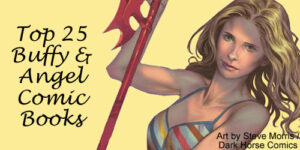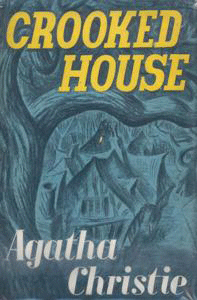“Crooked House” (1949) is one of the colder Agatha Christie novels, and it’s not accidental. But it is subtly achieved. It’s set in a crooked house that’s so nicknamed not because the Leonides family members are crooks, nor because they are dysfunctional (at least not in the standard way).
But when aging patriarch Aristides is poisoned to death, there’s something not quite right about everyone’s reactions. “Crooked House” is among Christie’s elite novels, and also one that’s hard to talk about without putting a spoiler warning right up front. So here goes: SPOILERS FOLLOW.
A new kind of killer
In Christie’s career up to this point, some types seemed off limits for being the killer: servants, children, pets. Even a narrator, a detective and a group of a dozen collaborators had been the culprit(s). In “Crooked House,” finally, a child is the killer.

“Crooked House” (1949)
Author: Agatha Christie
Genre: Mystery
Setting: The Leonides estate, London, Fall 1947
Christie hadn’t written many children at all up to this point. She does a masterful job with Josephine, described as being 11 or 12 by narrator Charles, an informal assistant to Inspector Taverner. Josephine is precocious, so that makes the writing easier.
More to the point, Josephine is a sociopath. Children who haven’t yet learned morality (and perhaps aren’t capable of learning it) are among the most unsettling horror and murder-mystery villains, in my opinion.
Recently we’ve gotten the “Orphan” sequel (although those familiar with that franchise know why Esther doesn’t quite fit this mold). Others that jump to mind include the kid from the “Angel” episode “I’ve Got You Under My Skin”; “Walking Dead” tween Lizzie, who is famously instructed to “Look at the flowers”; and Olivia Cooke in “Thoroughbreds” — although she is a bit older.
(“Crooked House” is a first for Christie in exploring this topic, but where does it fall in literary history? I know “Of Mice and Men” predates it, but that’s about a mentally challenged adult. At any rate, it’s something new for Christie, so “Crooked House’s” fatalistic finale and theme make a strong impact amid a chronological read of her works.)
The moral question
Christie directly addresses the topic of moral immaturity early on, although we don’t know at the time that she’s sneakily describing Josephine. Charles’ father, a lawyer, mulls the nature of murderers in chapter 12:
“A child, you know, translates desire into action without compunction. A child is angry with its kitten, says ‘I’ll kill you,’ and hits it on the head with a hammer – and then breaks its heart because the kitten doesn’t come alive again! …
“They get – very early – to a stage when they know that that is ‘wrong’ — that is, that it will be punished. Later, they get to feel that it is wrong. But some people, I suspect, remain morally immature. They continue to be aware that murder is wrong, but they do not feel it.”

Christie showed interest in the idea that some killers can’t help themselves in “The Murder at the Vicarage.” She submitted that future societies would find the practice of executing mentally ill people for their crimes barbaric.
In “Crooked House,” she essentially writes an entire novel about the idea. A reader won’t know the book is about this topic till the end, but they might feel it. We sense it the same way the Leonides family feels there’s something wrong in the house (and indeed, it’s possible they suspect Josephine is the killer but won’t share the suspicion).
Character study
Giving “Crooked House” additional depth, we don’t know for sure if Josephine is the way she is because of nature or nurture. Christie presents evidence for the latter.
Josephine’s mother, the actress and playwright Magda, is self-absorbed, and her coddling by husband Philip and father-in-law Aristides doesn’t help. Granted, Aristides isn’t reckless with his money – he refuses to fund Magda’s unprofitable plays. But he does fund Philip’s and Magda’s living expenses under his roof. Indeed, Magda is so sheltered that her daughter Sophia almost functions as a mother to her.
But if I were to choose a side in a debate, I’d say “nature.” Philip and Magda aren’t bad people, and they aren’t unloving. But primarily I’ll point to this: Josephine has two older siblings who aren’t murderers.
Sophia, Josephine’s oldest sibling, is the fiancée of Charles; probably the fewest words are spent on her, but that’s because she’s the most “normal” Leonides. Like in a lot of Christie books, she is concerned that evil is hereditary; therefore, if a family member is a murderer, she is tainted. She’ll only marry Charles if a non-blood relative is the killer (although she changes her mind at the end).
Eustace, the middle child, is ultimately a harmless rebellious teen. We’re supposed to consider him as a suspect, of course. On my first reading, I did indeed mull everyone’s odds of being the killer. On the re-read, I wondered if that reaction comes naturally from a reader, simply because the characters are being presented to us. Maybe an author doesn’t need to do more than that.
Wrapping up a great decade
On this re-read, I perceived “Crooked House” as a Josephine character study. That said, Christie does take a while before introducing the girl, and all the other Leonideses are fully formed in their own right.
And they are all plausible people, flawed and immature in some areas, but basically decent. Although Christie’s “house full of related suspects” yarns inspired the recent comedy-mystery “Knives Out” and its colorfully over-the-top denizens, and although it would seem there’s a direct line from “Crooked House” to “Knives Out,” there really isn’t. There’s nothing funny about this novel; “tragedy” is the proper classification.
The 1930s was probably Christie’s greatest decade, as she came up with so many brilliant plots. But the 1940s can state a case too, because of her mastery of character-driven (or as Poirot would say, “psychological”) mysteries. The decade includes the masterpieces “Five Little Pigs” and “The Hollow,” and contenders like “Towards Zero” and “There is a Tide …”
Of them all, though, “Crooked House” remains the most chilling.
Sleuthing Sunday reviews an Agatha Christie book or adaptation. Click here to visit our Agatha Christie Zone.

